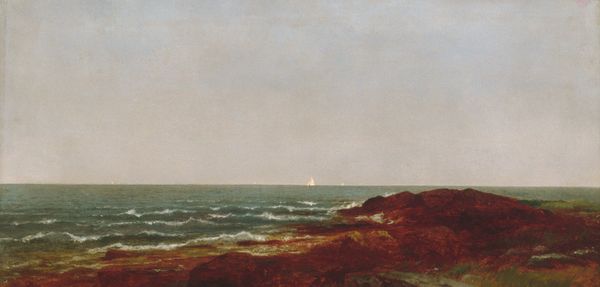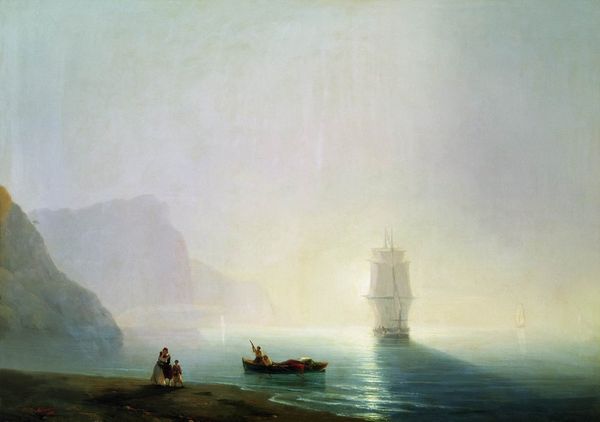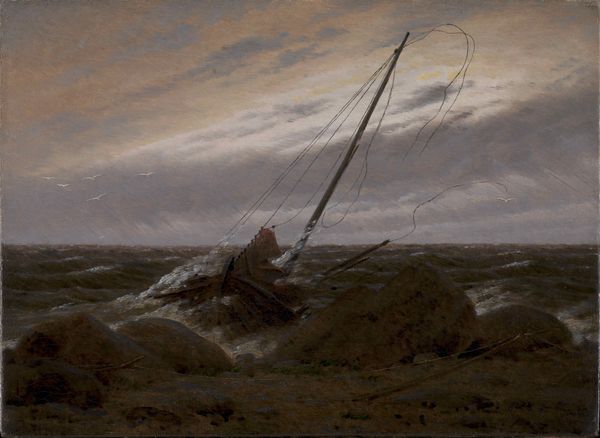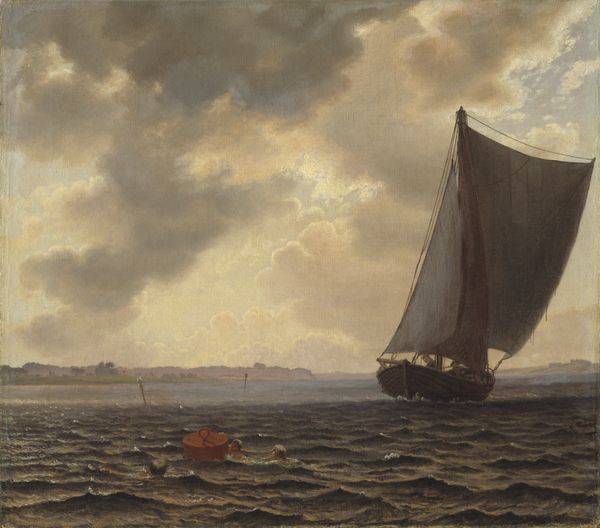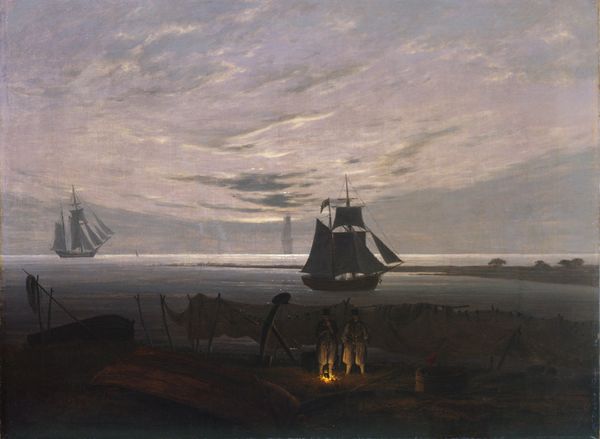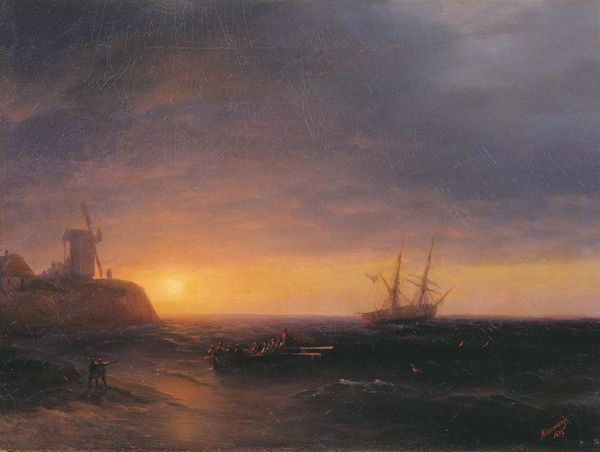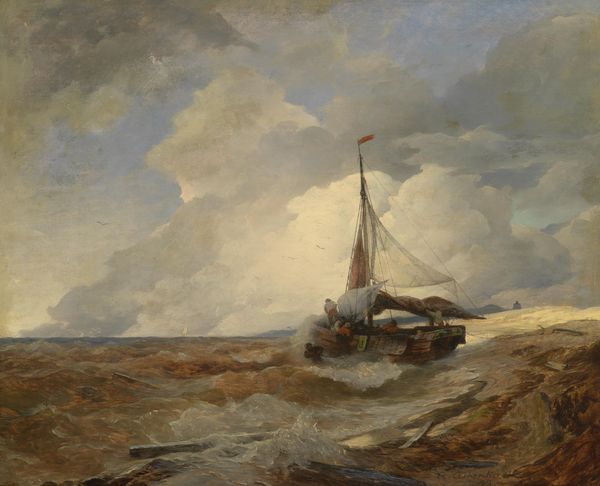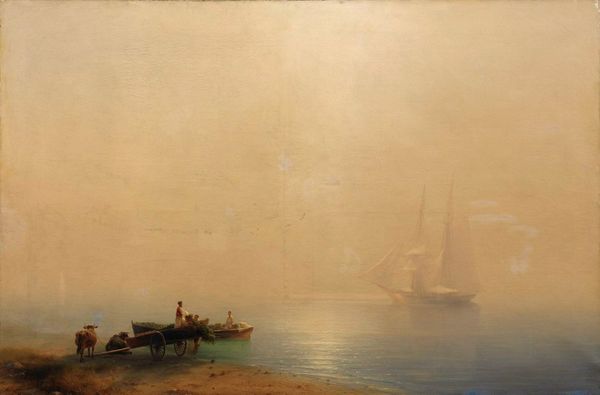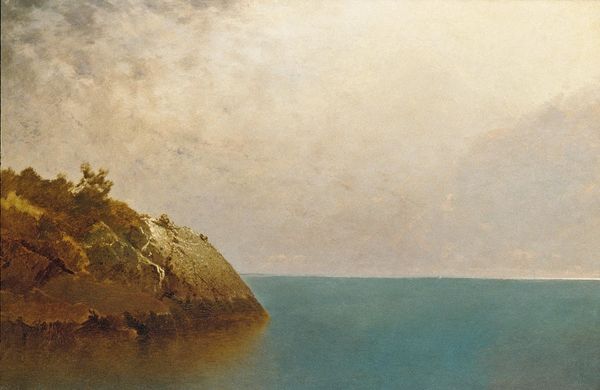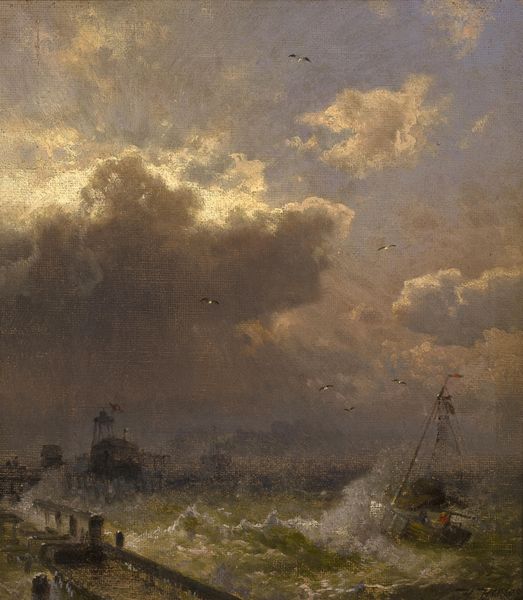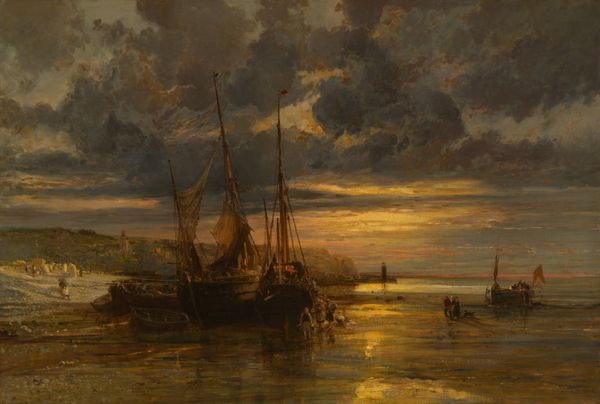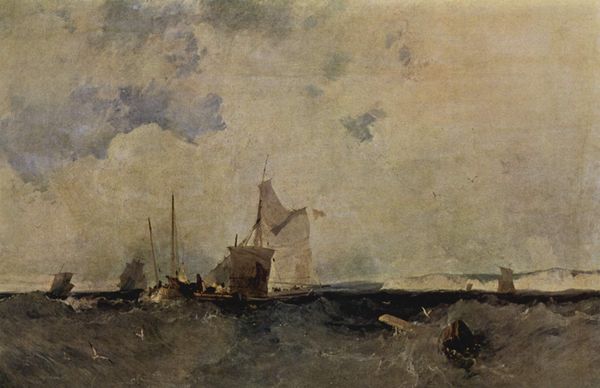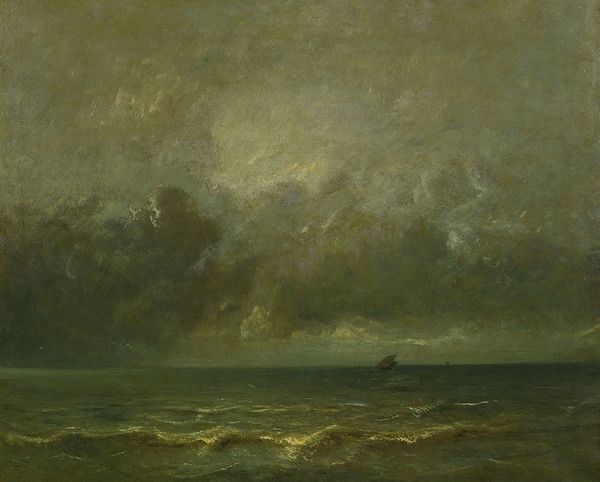
painting, oil-paint
#
sky
#
water colours
#
painting
#
atmospheric-phenomenon
#
oil-paint
#
landscape
#
romanticism
#
cityscape
#
watercolor
#
realism
Dimensions: 34.2 x 50.2 cm
Copyright: Public domain
Editor: This is Caspar David Friedrich’s "Fog," painted around 1807, in oil paints, here on display at the Belvedere. The subdued colors really contribute to an eerie feeling. What strikes you most about it? Curator: Beyond the somber mood, consider what "Fog" tells us about the rise of Romanticism. Friedrich created this landscape during a period when artistic attention was shifting towards the subjective experience. This painting emphasizes an individual's emotional response to nature, mirroring the socio-political upheavals and a growing unease with the rationalism of the Enlightenment. Editor: I hadn't thought about it in relation to the Enlightenment's decline. The fog seems to obscure reason, I suppose. What role do you think museums play in shaping how we perceive works like this today? Curator: Museums curate not just art, but also history. By displaying "Fog" in a particular context, a museum subtly influences our interpretation, maybe amplifying the nationalistic readings it accumulated after its initial display to audiences. It is impossible to see this painting divorced from its cultural legacy. Do you think its initial audiences viewed it differently? Editor: That’s a great point! People now probably connect the atmospheric landscape to Romantic ideals and its subsequent institutionalization more than the painting itself. Curator: Exactly! Museums and the art market contribute to a painting’s symbolism, reinforcing narratives around artistic genius and cultural identity, perhaps at the expense of a deeper appreciation of its complex relationship with societal anxieties. Editor: That definitely changes my perception of how influential institutions are on artwork appreciation. Curator: And Friedrich's "Fog" highlights just how powerful and ever-changing that influence is.
Comments
No comments
Be the first to comment and join the conversation on the ultimate creative platform.
